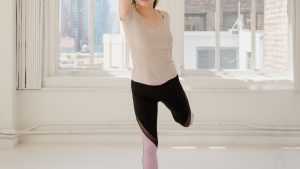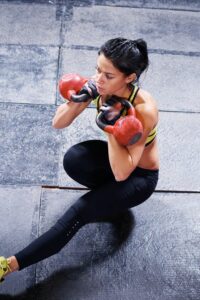Pistol squats are a challenging lower-body exercise that demands balance, strength, and flexibility. These single-leg movements require substantial hip mobility and stability, making them popular among fitness enthusiasts and athletes. However, the question arises: Should pistol squats be performed with added weight to improve hip flexibility? Let’s delve into this topic to understand the nuances and benefits associated with pistol squats, both with and without added weights.

Understanding Pistol Squats
Pistol squats involve lowering oneself down on one leg while keeping the other leg extended in front. This movement significantly engages the quadriceps, glutes, hamstrings, and core muscles. Beyond building strength, pistol squats enhance balance, coordination, and lower-body stability.
Hip Flexibility and Weighted Pistol Squats
While pistol squats alone can enhance hip flexibility by requiring a wide range of motion, incorporating additional weight can provide varying results. The use of weights in pistol squats can increase the challenge and build more strength but might not be directly correlated with improving hip flexibility.

Considerations for Adding Weight
Strength Development: Adding weight to pistol squats can promote muscle growth and strength gains, contributing to overall lower-body power.
Risk of Injury: However, overloading pistol squats with weights, especially for individuals lacking adequate hip flexibility, might strain the hips, knees, or lower back, leading to potential injuries.
Impact on Flexibility: Weighted pistol squats may not specifically target hip flexibility. The emphasis often shifts more towards strength building rather than enhancing flexibility.
Improving Hip Flexibility without Weight
Prioritizing dedicated exercises aimed at improving hip flexibility might yield better results than solely relying on weighted pistol squats. Incorporating stretches and mobility drills that directly target the hip flexors and surrounding muscles can be more effective in enhancing flexibility.
Recommended Exercises for Hip Flexibility
Hip Flexor Stretches: Perform static stretches such as the kneeling hip flexor stretch to specifically target and lengthen the hip flexor muscles.
Dynamic Hip Mobility Drills: Incorporate exercises like leg swings, hip circles, or yoga poses like the pigeon pose to improve the range of motion in the hips.
Foam Rolling and Massage: Utilize foam rollers or massage balls to alleviate muscle tightness and enhance mobility in the hip area.
So.
While weighted pistol squats can contribute to overall lower-body strength and stability, they may not be the most effective method for improving hip flexibility. Opting for a balanced approach that includes targeted flexibility exercises alongside strength training is key to enhancing hip mobility. Always prioritize proper form and listen to your body to prevent any potential injuries while performing pistol squats or any other exercises.
In summary, while weighted pistol squats can build strength, focusing on specific exercises aimed at enhancing hip flexibility might be more beneficial. Remember, fitness is a journey, and incorporating a variety of exercises tailored to your goals is essential for overall progress.
Remember, consult a fitness professional or physical therapist before starting any new exercise regimen, especially if you have pre-existing injuries or conditions.
Let’s explore further into the realm of weighted pistol squats and their impact on hip flexibility.
Assessing the Role of Weighted Pistol Squats
Benefits of Adding Weight
Strength Progression: Incorporating additional weight gradually in pistol squats challenges the muscles further, potentially aiding in strength progression over time.
Functional Strength: Weighted pistol squats can simulate real-life movements, enhancing functional strength necessary for activities like running, jumping, or lifting.
Muscle Activation: The added resistance in weighted pistol squats activates muscle fibers more intensely, fostering muscle growth and toning.
Challenges and Considerations
Technique and Form: Proper form is paramount in weighted exercises, particularly with pistol squats. Without adequate technique, the risk of injury amplifies.
Specificity of Flexibility: Weighted pistol squats might not specifically target hip flexibility. For improved flexibility, targeted stretches and mobility exercises remain crucial.
Individual Differences: Each person’s body responds differently to weighted exercises. Some may experience improved flexibility, while others might face limitations or strains.
The Balance: Weighted vs. Unweighted Exercises
The debate between weighted and unweighted pistol squats hinges on personal fitness goals. If the primary aim is to enhance strength and stability while maintaining a decent level of flexibility, incorporating weighted pistol squats sensibly can be beneficial. However, for those seeking significant gains in hip flexibility, prioritizing specific flexibility drills is key.
Integrating a Comprehensive Approach
1. Warm-Up: Begin with a dynamic warm-up targeting the lower body to prepare muscles and joints for the exercise.
2. Technique Mastery: Before adding weight, ensure proficiency in performing bodyweight pistol squats with proper form.
3. Gradual Progression: Start with lighter weights and progressively increase resistance to avoid overwhelming the body and risking injury.
4. Flexibility Focus: Supplement weighted pistol squats with dedicated flexibility exercises to improve hip mobility and prevent muscle tightness.
Final Thoughts
The efficacy of weighted pistol squats for improving hip flexibility remains subjective and might vary from person to person. Incorporating them as part of a well-rounded exercise routine, balanced with flexibility-focused drills, can offer a holistic approach to fitness.
Remember, individual bodies respond uniquely to different exercises, so paying attention to personal limitations and gradually progressing in both strength and flexibility endeavors is crucial.
By striking a balance between weighted exercises and targeted flexibility routines, individuals can optimize their fitness journey, achieving not only strength and stability but also enhanced flexibility and overall well-being.
External Resources:
The Definitive Guide to Pistol Squats – Bodybuilding.com
Importance of Flexibility in Strength Training – Healthline
Advanced Pistol Squat Progressions – Nerd Fitness
7 Hip Flexor Stretches to Improve Mobility – Self.com
The Best Mobility Exercises for Hip Flexibility – Men’s Health
Injury Prevention for Pistol Squats – Stack.com
Always prioritize safety, proper form, and a well-rounded fitness approach tailored to your body’s needs and goals. Consult a fitness professional or physical therapist for personalized guidance and advice.
Comparison tabular
Here’s a comparison table summarizing the key aspects of performing pistol squats with and without weights for improving hip flexibility:
| Aspect | Pistol Squats Without Weight | Pistol Squats With Weight |
|---|---|---|
| Primary Focus | Hip mobility and bodyweight strength | Strength building with added resistance |
| Hip Flexibility Improvement | Emphasizes flexibility, as it requires a wide range of motion | Might not specifically target hip flexibility |
| Muscle Engagement | Engages lower body muscles (quads, hamstrings, glutes) and core | Similar muscle engagement with added resistance |
| Strength Development | Develops bodyweight strength and stability | Increases resistance for muscle growth and strength gains |
| Risk of Injury | Lower risk when performed with proper form | Increased risk if form and technique are compromised |
| Specificity in Flexibility | Primarily targets hip flexibility | Less focused on enhancing flexibility |
| Balance of Weight and Flexibility | Can enhance flexibility with dedicated stretches and mobility exercises | Requires balancing strength gains with separate flexibility-focused routines |
| Progression | Gradually progress in mastering the movement and increasing reps | Gradual increase in weight to challenge muscles |
| Advisory Note | Suitable for those aiming to improve flexibility and bodyweight strength | Requires caution and attention to form; suitable for those seeking added resistance in strength training |
This comparison table highlights the key differences between performing pistol squats without weight and incorporating weights, focusing on their impact on hip flexibility, muscle engagement, injury risk, and overall fitness goals.
Wrapping up
In the pursuit of fitness goals, whether it’s enhancing hip flexibility, building strength, or achieving a balanced approach to overall wellness, the choice between weighted and unweighted pistol squats ultimately hinges on individual preferences and objectives.
Remember, while weighted pistol squats can bolster strength and functional capacity, they might not singularly cater to improving hip flexibility. Emphasizing a blend of both weighted and unweighted exercises, coupled with targeted flexibility drills, presents a holistic approach for optimal results.
Prioritize proper form, gradual progression, and a comprehensive routine that addresses not only strength but also flexibility needs. Fitness isn’t a one-size-fits-all journey, so listen to your body, respect its limitations, and seek guidance from professionals to tailor your regimen effectively.
By embracing a balanced mix of exercises that align with your goals and paying attention to form, you’ll carve a path that not only fosters strength gains but also nurtures flexibility, contributing to a well-rounded and sustainable fitness journey.

Hey there, it’s Mike Rrsq, the Editor-in-Chief over at Jsquat.com, and I’m absolutely obsessed with all things squat fitness! I’ve been lucky enough to get some serious recognition for my work in this field. With a solid background in the fitness and wellness industry, I’ve been there right from the get-go, helping shape this website into what it is today.
You see, I’m not just the boss around here; I’m also a passionate contributor. I love sharing my insights through my articles, and trust me, they’re not your run-of-the-mill stuff. Each piece I write is a labor of love, filled with my expertise and real-world experience in the fitness universe. So, if you’re into fitness and looking for some inspiration, you’re in the right place!
Related Posts
- Should back squat make me feel a challenge in my hip flexibility
Back squats can indeed challenge your hip flexibility. When you perform a back squat, your…
- If you can do a pistol squat, does that mean you could do barbell squats of your weight
Being able to perform a pistol squat doesn't necessarily translate directly to being able to…
- Should Pistol Squat Make Your Hip Adductors Burn
Pistol squats, with their demanding single-leg stance, are renowned for their ability to engage various…
- Are Squats Without Weight Effective? (Explained)
Are you wondering if squats without weight are worth your time? Learn the benefits and…
- Why You Feel The Weight So Much in Your Hips in Squats
It's a familiar feeling we all have when we go to do our squats -…
- Are pistol squats (single-leg squats) for making your butt and thighs bigger
Pistol squats, also known as single-leg squats, are fantastic for building strength, stability, and muscle…
- Why Do Squats Make Me Feel a Stretch In My Hip Flexors: Explained)
Squats are a popular exercise that targets multiple muscle groups, including the quadriceps, hamstrings, and…
- Can you lose weight and burn calories with jump squats
Absolutely. Jump squats are a fantastic exercise that can indeed help with weight loss and…
